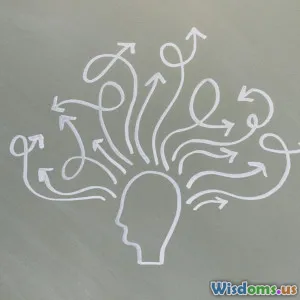
Techniques for Lucid Dreaming
7 min read Unlock the secrets of lucid dreaming with practical techniques that enhance your dream experience and self-awareness. (0 Reviews)
Techniques for Lucid Dreaming
Lucid dreaming is a fascinating phenomenon where individuals become aware that they are dreaming and can often exert control over the dream narrative. This state of awareness opens up a realm of possibilities for exploration, creativity, and personal growth. In this article, we will delve into several effective techniques for achieving lucidity in dreams, empowering you to navigate your dream world with intention.
Understanding Lucid Dreaming
Before we explore the techniques, it’s important to understand what lucid dreaming entails. During a lucid dream, the dreamer recognizes that they are in a dream state. This awareness can occur spontaneously or can be cultivated through specific practices. Lucid dreams can be vivid and immersive, leading to experiences that feel real and impactful.
The Benefits of Lucid Dreaming
Lucid dreaming has several potential benefits, including:
- Enhanced Creativity: Many artists and innovators have reported using lucid dreams to inspire new ideas and solve complex problems.
- Overcoming Nightmares: Lucid dreaming can help individuals confront and overcome recurring nightmares by allowing them to change the narrative.
- Self-Exploration: Engaging with dream content can provide insights into one's subconscious thoughts and emotions.
Techniques for Achieving Lucid Dreams
1. Reality Checks
Reality checks are simple tests performed throughout the day to determine whether you are awake or dreaming. Here are some common methods:
- Finger through palm: Try to push your finger through the palm of your other hand. In a dream, it may go through.
- Reading text: Look at a piece of text, look away, and then look back. In a dream, the text often changes.
- Nose pinch: Pinch your nose and try to breathe through it. If you can, you are likely dreaming.
Performing these checks regularly can help condition your mind to recognize dream states.
2. Dream Journaling
Keeping a dream journal is an effective way to enhance your dream recall and increase self-awareness. Start by writing down your dreams as soon as you wake up. Note any emotions, themes, or symbols that stand out. Over time, you may begin to notice patterns that can signal when you are dreaming. Here’s how to maintain a dream journal effectively:
- Write immediately: Capture your dreams as soon as you wake up to ensure accuracy.
- Detail-oriented: Include as many details as possible, such as colors, people, and emotions.
- Review regularly: Regularly read through your entries to identify recurring themes or symbols that could trigger lucidity.
3. Visualization Techniques
Visualization can be a powerful tool for inducing lucid dreams. Before falling asleep, spend a few minutes visualizing yourself becoming aware that you are dreaming. Imagine a scenario where you recognize a dream sign (a common symbol in your dreams) and realize it is a dream. This practice can reinforce your intention to achieve lucidity while dreaming.
4. Mnemonic Induction of Lucid Dreams (MILD)
The MILD technique involves setting a strong intention to realize you are dreaming during the next sleep cycle. Here’s how to practice MILD:
- Wake Up: Set an alarm to wake you after 5-6 hours of sleep.
- Affirmation: As you fall back asleep, repeat a phrase like, “I will realize I’m dreaming.”
- Focus: Visualize a recent dream and imagine yourself becoming aware while dreaming.
5. Wake-Back-to-Bed (WBTB)
The WBTB technique is often used in combination with MILD. The process is simple:
- Wake Up: After 5-6 hours of sleep, wake up and stay awake for 20-30 minutes.
- Engage with Dream Material: Read about dreams or your dream journal during this time to keep your mind focused on dreams.
- Return to Sleep: Go back to bed with the intention of becoming lucid in your dreams.
6. Wake-Initiated Lucid Dreaming (WILD)
WILD is a more advanced technique where you transition directly from wakefulness into a dream state while maintaining consciousness. Here’s how to practice it:
- Relaxation: Find a comfortable position and relax your body while keeping your mind alert.
- Focus on Hypnagogic Imagery: As you begin to drift off, pay attention to the images and sensations that arise. This is the state between wakefulness and sleep.
- Stay Conscious: As you feel yourself entering a dream, try to maintain your awareness so that you can enter the dream consciously.
Conclusion
Lucid dreaming offers a unique opportunity to explore the depths of our subconscious mind, enhance creativity, and confront fears. By utilizing techniques such as reality checks, dream journaling, and visualization, you can increase your chances of achieving lucidity in your dreams. Remember that patience and practice are key; the more you engage with these techniques, the more adept you will become at navigating your dream world. Sweet dreams and happy dreaming!
Rate the Post
User Reviews
Popular Posts





















